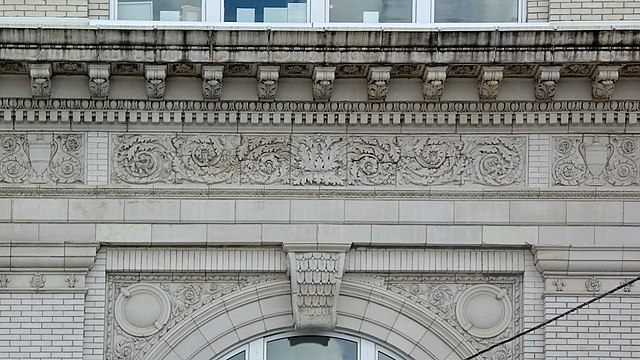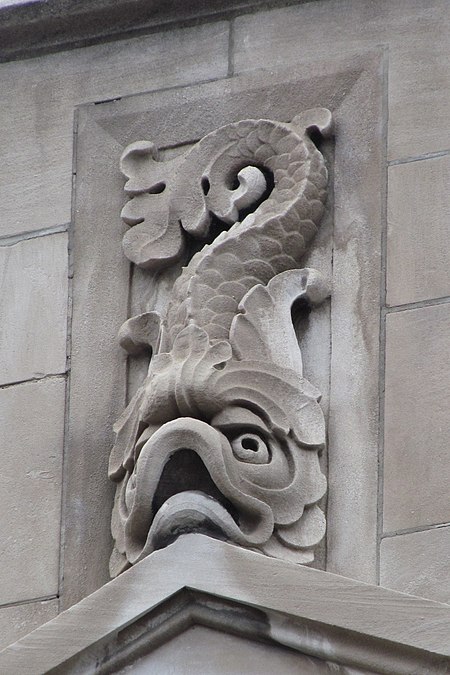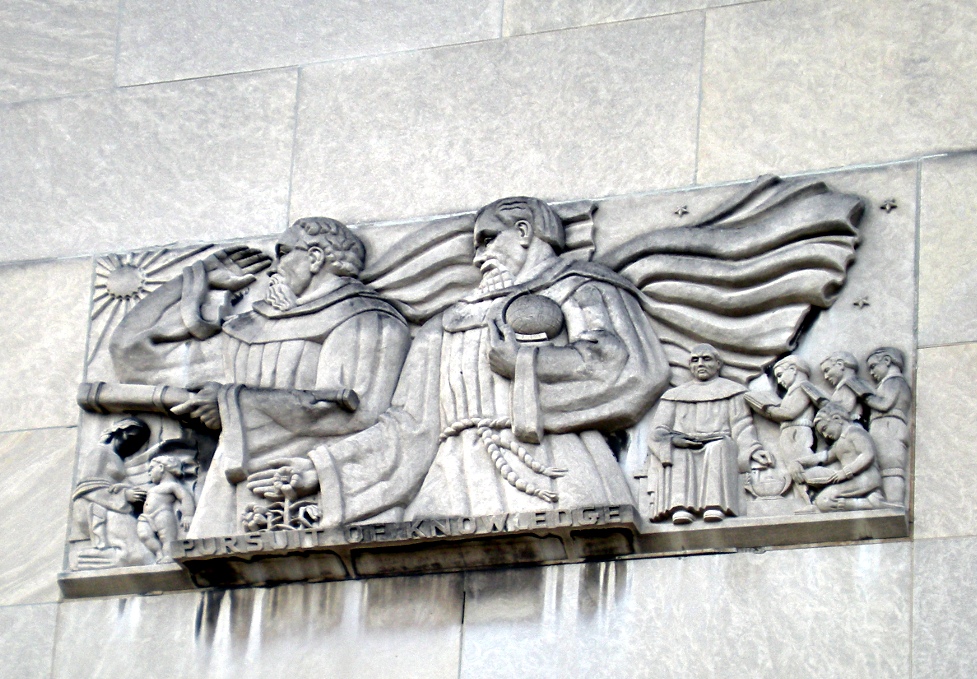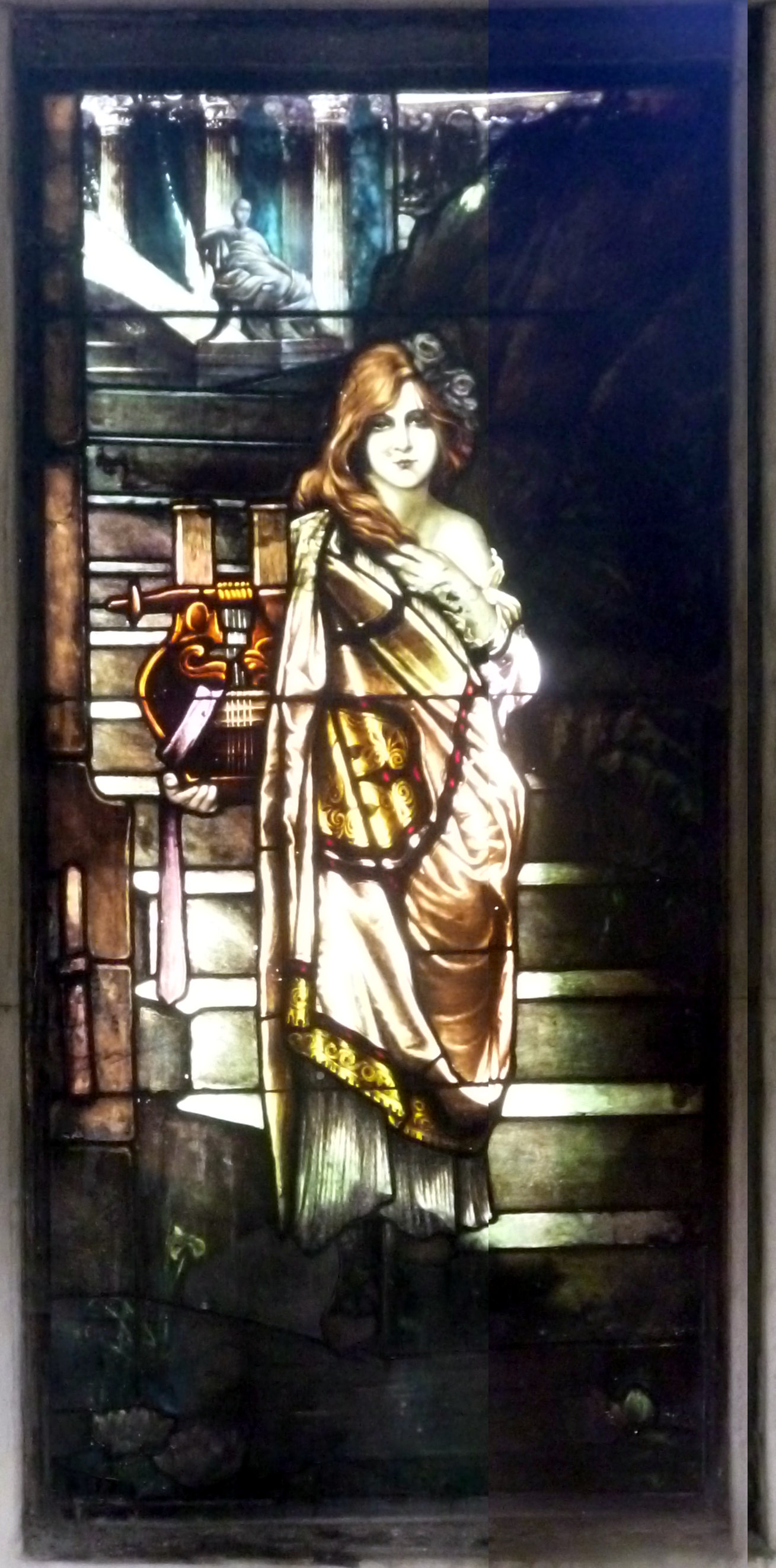
No. 1. A rectory. This is one of the side domes of the ostentatiously German rectory for St. Michael’s Church on the South Side Slopes. The rectory was built in 1890; the architect was Frederick Sauer, who gave us many beautiful churches and the whimsical Sauer Buildings in Aspinwall.

No. 2. A telephone exchange. In the days of telephone operators, telephone exchanges were put up in every neighborhood, and the telephone company always made sure to make them architecturally pleasing. This one in Allentown is an outstanding example of Art Deco design. (For out-of-towners, we should point out that this is Allentown the Pittsburgh neighborhood, not Allentown the large city in the Lehigh Valley.)

No. 3. Randal O’Toole correctly guessed that this was a movie theater. The old Brighton Theater (it really is worth seeing the other pictures of it) stands in the North Side neighborhood of California-Kirkbride, or Calbride for short. It now houses the offices of a postal labor union.

No. 4. A car dealer. This splendid terra-cotta decoration adorns a building put up on Centre Avenue in Shadyside for a dealer in Pierce-Arrow automobiles, the luxury brand for people who thought Packards were too lower-class.

No. 5. A bank. One of a pair of grotesque caryatids that hold up a bit of the immense decorative superstructure of the Dollar Bank downtown on Fourth Avenue. The entire building is done in this kind of taste by the celebrity architect Isaac H. Hobbs.

No. 6. An apartment building. This whimsically random brickwork is on the front of an apartment building on Central Square in Uptown Mount Lebanon. For out-of-towners, it may be necessary to explain that, in southwestern Pennsylvania, “uptown” commonly means “downtown” if downtown is on a hill—except in the city of Pittsburgh itself, where Uptown is a neighborhood just east of downtown.

No. 7. A municipal building. These Art Deco heads adorn the Mount Lebanon Municipal Building. Father Pitt and Dr. Boli cannot agree on what they represent. Father Pitt thinks they are meant for crusaders, in honor of the Lebanon across the sea for which Mount Lebanon was named; Dr. Boli thinks they are golems.

No. 8. A bathhouse. The Oliver Bathhouse, designed by MacClure and Spahr (possibly based on an original design by Daniel Burnham), is the only public bath left in the city of Pittsburgh. In the early 1900s, public baths were everywhere to serve the tenement poor who had no access to proper bathing facilities; this one remains because its indoor swimming pool pleases yuppies.

No. 9. A commercial building. The Buhl Building, designed by Benno Janssen, is a six-storey office building with storefronts on the ground floor. Janssen liked terra-cotta tiles early in his career; he gave the Kaufmann’s department store very similar decorations.

No 10. A school. North Catholic High School is a grand Art Deco construction with these remarkable reliefs by Charles Bradley Warren illustrating “The Pursuit of Knowledge.” If you ever wanted to draw a comic book with superhero monks, here are your models.

No. 11. A mausoleum, or a private house. Either answer is acceptable. This window, “The Spirit of the Water Lily” by the great William Willet, was designed for the home of George I. Whitney of Pittsburgh;(1) it is now in the Shields family mausoleum in the Homewood Cemetery, and how it got there Father Pitt and Dr. Boli have not been able to find out. There is a mysterious allegory in this window that we have not been able to unravel.

No. 12. A monument dealer. This ostentatiously Egyptian building in Green Tree is now a small office building, but it was built (right across the street from the Chartiers Cemetery) for a dealer in cemetery monuments.

No. 13. A private house. This head of Minerva (so we identify it) adorns the gable of a fine Victorian rowhouse on Sarah Street on the South Side. It is much like many of the other houses in the same block, except that not one of the others has a head of Minerva in the gable.
Footnotes
- See this article about Willet in the Booklover’s Magazine for February of 1904. Either the magazine illustration is backwards or the window is installed facing out in the mausoleum. (↩)